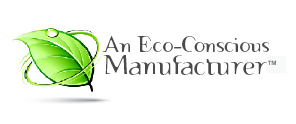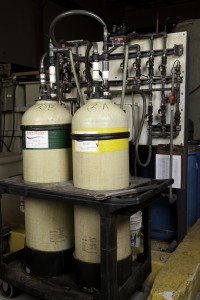 Committed to Environmental Stewardship and Safety
Committed to Environmental Stewardship and Safety
UCT Coatings is acutely aware of the vital role that corporations play in sustaining the lives of individuals, families and communities. Among our many corporate responsibilities, none are more important to us than environmental stewardship and safety:
- We do our best to create and sustain a healthy environment by employing environmentally sustainable practices throughout our operations.
- We diligently conform to all federal, state, and local regulations.
- We work to ensure air quality both inside and outside our facility.
- We employ sophisticated internal water treatment technologies and procedures, and we do not discharge industrial wastewater.
- We remain vigilant in the containment of our process chemicals.
- We utilize steam power to minimize consumption of electricity.

Even though our coating processes utilize thousands of gallons of water per day, our “closed loop” system ensures that not a single gallon of it is discharged as wastewater.
In short, we strive on a daily basis to minimize our company’s environmental impact, and maintain some the highest standards of environmental responsibility in our industry.
We also recognize that our corporate responsibilities extend beyond environmental matters, as evidenced by our emphasis on worker safety, and by our involvement in local business development efforts.
Specific Environmental and Worker Safety Measures in Place at UCT
- In automatic mode, all access doors are locked to prevent access.
- In maintenance and semi-automatic modes, the transporter can only be moved by an operator moving with the transporter.
- Converted from electric heat to steam heat based on natural gas. Allows fast chemistry changeover, reduces energy costs, and carbon footprint from fossil-fuel based electricity.
- Filtered air coming and leaving the building ensures no air pollution.
- No water discharged to drain lines. Water is used in a filtered, closed-loop system. Reduces consumption of critical water resource.
- Entire line is safety interlocked in multiple ways to prevent accidents.
- A plexiglass screen along the entire length of the line prevents body parts from entering the active chemistry area.
- Emergency stop buttons, trip wires, and crash bars located in critical locations. When emergency stop systems are activated the entire line is stopped except for the air handling system.
- Primary and secondary chemistry containment system with a sealed, angled containment area prevents chemistry escape.
- Push/pull air systems on surface of each tank to prevent worker exposure to chemistry.
- Air extraction inside transporter removed evaporating water and chemistry mist when parts and their racks are removed from chemistry. Prevent worker exposure to chemistry when components are removed from tanks.
- Vapor elimination systems separate vapors from air before the mixture gets to the air scrubber. Reduces the workload of the air scrubber and prevents contamination of outside air.
- Minimal part handling prevents injury from lifting heavy components.
- Fully alarmed to notify critical response team in case of any error codes.
- More than 100 critical parameters continuously and remotely sensed. Data feedback to a computer control center that can be remotely accessed. Process stability can be monitored and the machine controlled remotely.
- All aspects of the line are easily accessible and well labeled.
- Chemistry exchanges automated and controlled through dedicated transfer stations with metering pumps to prevent mixing dangerous combinations.
- An emergency power generator allows the air system and other critical systems to operate in the event of a power outage.
- Most chemistry can be used for more than year with only minor scheduled adjustments, reducing the amount of chemical byproduct.
